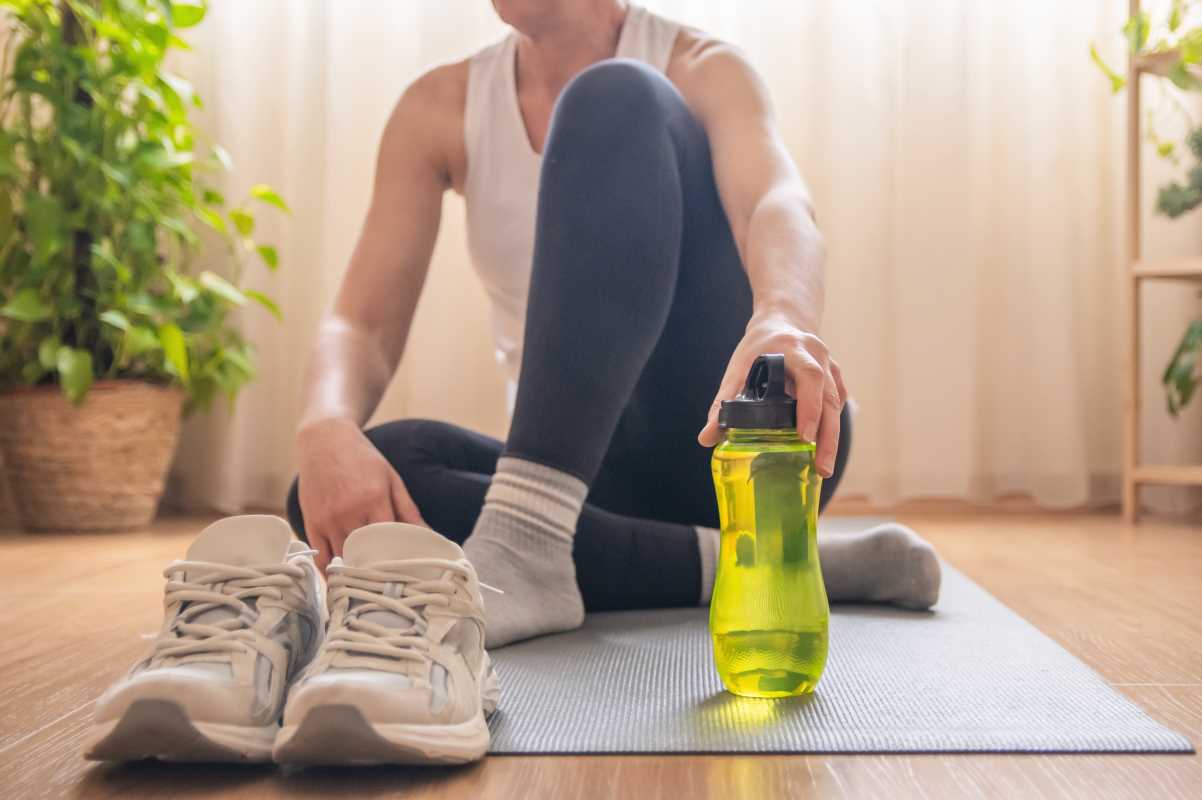You just crushed your workout. You’re feeling strong, accomplished, and probably a little sweaty. That feeling of pushing your limits is incredible, but what you do next is as important as the workout itself. Post-workout recovery isn't merely about avoiding soreness; it's the process that actually builds stronger muscles, improves performance, and prevents injuries. Think of your workout as the spark and your recovery as the fuel that builds the fire.
Why Post-Workout Recovery Matters
Your muscles need time to repair themselves after a tough session. Exercise creates microscopic tears in your muscle fibers. This is a normal and necessary part of getting stronger. The recovery process is when your body gets to work repairing these tears, which makes the muscle tissue stronger and more resilient than before.
Skipping proper recovery can lead to overtraining, a state where your body can't keep up with the demands you're placing on it. This can cause fatigue, decreased performance, mood swings, and an increased risk of injury. A smart recovery plan guarantees your hard work in the gym pays off and keeps you on track toward your fitness goals.
The Foundation: Nutrition and Hydration
What you eat and drink after exercising is the cornerstone of effective recovery. Your body is primed to absorb nutrients, so giving it the right fuel is essential for muscle repair and energy replenishment.
Refuel with Protein and Carbs
You should aim to eat a recovery meal or snack within 30 to 60 minutes after your workout. This window is when your body is most efficient at restocking its energy stores and starting the muscle repair process. Your post-workout meal should contain a mix of protein and carbohydrates.
- Protein: This macronutrient provides the amino acids necessary to rebuild damaged muscle fibers. Aim for about 20-30 grams of high-quality protein. Great sources include whey protein shakes, Greek yogurt, chicken breast, eggs, or tofu.
- Carbohydrates: Your body uses stored carbs, called glycogen, for energy during exercise. Consuming carbs after your workout replenishes these stores. Good options include fruits, oatmeal, sweet potatoes, or brown rice.
A simple and effective recovery meal could be a smoothie with protein powder and a banana, a bowl of Greek yogurt with berries, or grilled chicken with a side of roasted sweet potatoes.
Don't Forget to Rehydrate
You lose a significant amount of fluid through sweat during a workout, even if you don't feel thirsty. Dehydration can hinder your recovery, cause fatigue, and lead to muscle cramps. It's crucial to replace those lost fluids.
Water is usually sufficient for rehydration after most workouts. You can also opt for an electrolyte drink if you've had a particularly long or intense session, especially in hot weather. Electrolytes are minerals like sodium and potassium that are lost in sweat and are vital for nerve function and muscle contraction. Coconut water is a great natural source of electrolytes.
The Power of Sleep
Never underestimate the importance of a good night's sleep. Your body performs the majority of its repair work while you're sleeping. During deep sleep, your body releases growth hormone, which is critical for muscle growth and repair.
Lack of quality sleep can increase levels of the stress hormone cortisol, which can break down muscle tissue and hinder recovery. It can also impact your energy levels and motivation for your next workout.
- Aim for Consistency: Try to go to bed and wake up around the same time every day, even on weekends.
- Create a Relaxing Routine: Wind down before bed by reading a book, taking a warm bath, or practicing light stretching.
- Optimize Your Environment: Keep your bedroom cool, dark, and quiet to promote uninterrupted sleep.
- Limit Screen Time: The blue light from phones, tablets, and computers can interfere with your body's production of melatonin, the hormone that regulates sleep. Try to put screens away at least an hour before bed
Active Recovery and Mobility
Active recovery involves low-intensity exercise performed after a more strenuous workout. It can help reduce muscle soreness and stiffness by increasing blood flow to your muscles, which delivers oxygen and nutrients while flushing out metabolic waste products.
Ideas for Active Recovery
- Light Cardio: A gentle walk, a slow bike ride, or a casual swim can all be effective forms of active recovery.
- Stretching: Gentle stretching after a workout can help improve flexibility and relieve muscle tension. Focus on static stretches, holding each for 20-30 seconds.
- Foam Rolling: This self-myofascial release technique involves using a foam roller to apply pressure to your muscles. It can help release knots, reduce soreness, and improve your range of motion. Spend a few minutes rolling out major muscle groups like your quads, hamstrings, glutes, and back.
Modern Recovery Tools and Techniques
The world of fitness technology is always evolving, and 2025 brings some exciting tools to aid in recovery.
Percussion Therapy
Massage guns have become incredibly popular for a reason. These handheld devices use rapid pulses to deliver deep tissue massage, a technique known as percussion therapy. This can help increase blood flow, alleviate muscle soreness, and break up tight muscle knots. They are a convenient way to target specific sore spots from the comfort of your own home.
Compression Wear
Compression garments, such as socks, sleeves, and tights, apply gentle pressure to your limbs. This pressure can help improve blood circulation, reduce muscle swelling, and speed up the removal of waste products that contribute to soreness. Many athletes wear them during and after exercise to support recovery.
Cold and Heat Therapy
Alternating between cold and heat can be a powerful recovery strategy.
- Cold Therapy: Ice baths or cold showers can help reduce inflammation and numb sore muscles immediately after a workout. The cold causes blood vessels to constrict, which helps flush out waste products once the body warms up again.
- Heat Therapy: Applying heat with a heating pad or taking a warm bath can increase blood flow to the muscles, helping to relax them and relieve tension. This is often best used a day or two after a tough workout, not immediately following it.
By integrating these tips into your routine, you can ensure your body recovers effectively, allowing you to come back stronger, healthier, and ready for your next challenge.
 (Image via
(Image via





